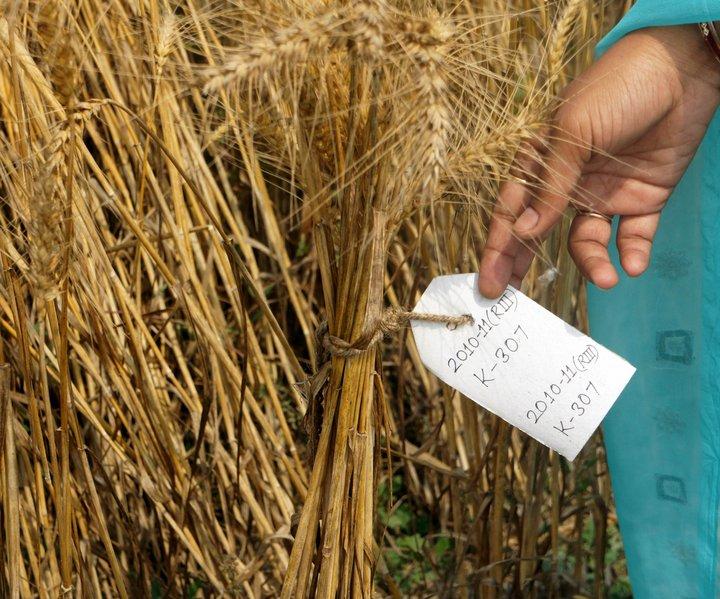Press and News Farmer science accelerates climate adaptation

A new study in PNAS addresses the challenge of climate adaptation in a way that is both scalable and targeted. Scientists demonstrate a unique approach using crowdsourced citizen science that capitalizes on farmers’ knowledge.
New and rapidly evolving climate conditions brought about by climate change require farmers to replace their crop varieties more often than they did in the past. But every time farmers change a variety, they take a risk. How can they know if a new variety will grow well on their farm? Farmers need information that takes into account their local conditions, and they need it fast. A new study published in PNAS shows how farmers themselves can get involved in scientific studies to accelerate the generation of information about variety adaptation.
Jacob van Etten, one of the lead authors of the study, explains how the idea originated. “This work started with the idea that in the agricultural sciences we could learn from ecologists and environmental scientists who get massive feedback from citizen scientists. For example, bird ecologists put together data from many bird watchers, who contribute their observations to large database. In this way, they can trace bird movements across continents and see how climate change affects migration patterns over the years. With so many people contributing, they can track the impact of climate change as it happens. It occurred to us that we need a similar citizen science approach in agriculture to help farmers to adapt to climate change.”
During several growing seasons, the authors organized rounds of farm experimentation with three different crop species, in Nicaragua, Ethiopia and India. They applied a citizen science approach called tricot (for triadic comparisons of technologies). In tricot variety evaluation, each farmer plants seeds from a personalized test package of three varieties, which are randomly assigned from a larger pool of tested varieties. The authors kept track of seed varieties and the location of plots. But the experiments themselves were up to farmers, who generated data by planting a total of 12,409 plots. A simple ranking-based feedback format allows even farmers with low literacy skills to contribute their evaluation data through various channels, including mobile telephones.
The authors then linked the farmer-generated data via their geographic coordinates to agroclimatic and soil data. "We tested a novel method of statistical modelling to see if there is a link between climate and variety performance, to try to explain why certain varieties perform better than others," says Kauê de Sousa, one of the authors of the study. "The results were very positive. For our three countries, our models show that there is a very clear link between variety performance and climate – a single climatic variable can explain the behaviour of the varieties, and the results corresponded well with what we know about the stress tolerance of these varieties. We could also generate varietal recommendations for different agroclimatic zones."
How do these findings help farmers? The authors write that the farmer trials can improve variety recommendations as they are more targeted to local climates. They show that the recommendations generated by farmers improve those provided before by scientists. Also, in the future the information could be blended with seasonal climate forecasts to further improve the recommendations and can serve to create variety portfolios that diminish climate risk. “This study does not only confirm that our initial hunch was correct – citizen science can help farmers with climate adaptation. It also shows the enormous potential of citizen science in agriculture,” says Jacob van Etten. “It opens a whole new area of possibilities.”
Read the study 'Crop variety management for climate adaptation supported by citizen science' published in PNAS
Read the press release about the study on EurekAlert!
______________________
Part of this research was supported by cooperative agreement AID-OAA-F-14-00035, which was made possible by the generous support of the American people through the United States Agency for International Development (USAID). The research received financial support from McKnight Foundation (CCRP 16-098), the German Federal Ministry for Economic Cooperation and Development (BMZ/GIZ, Contract No. 81194988) and the Indian Council of Agricultural Research (ICAR, Annual Workplan). This work was implemented as part of the CGIAR Research Program on Climate Change, Agriculture and Food Security (CCAFS), which is carried out with support from the CGIAR Trust Fund and through bilateral funding agreements. For details please visit https://ccafs.cgiar.org/donors

